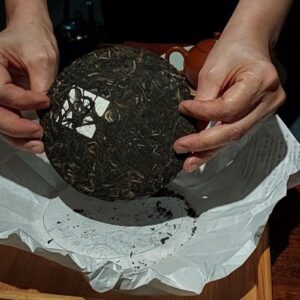Jakarta (ANTARA) – Chinese and Japanese people both have tea drinking rituals, but there are several differences in their tea drinking ceremonies.
Siangming Tea House owner Suwarni Widjaja, who has received a tea certificate from Kyoto Japan and a tea title from China, explained several differences between tea ceremonies in China and Japan.
When met by ANTARA in Jakarta, Wednesday (20/11), this female tea expert said that the Chinese tea ceremony is generally carried out using simple tools.
According to him, the Chinese-style tea ceremony begins with preparing the brewing and serving tools, such as plates for placing small teapots in which to brew tea, large plates for serving pots, and small teacups for guests.
“Pot serve it is for serving to glasses or guests. Because of this glass (serving pot), it is fair, so everyone drinks the same brew. “It’s not like putting them one by one in a glass,” he said.
If the tea from the teapot is poured directly into the cups one by one, he continued, then the last cup will have tea that is quite thick and bitter.
Suwarni also explained the philosophy behind the Chinese-style tea ceremony.
He said that the movement of lifting and putting down a cup when drinking tea means that people must accept what they get in the world and let it go if they have to return to God.
Also read: The role of tea is in the spotlight in China-Nepal relations

The tea ceremony in Chinese is called Cha Dao (pronounced: cha tao), which means journey or tea path.
Tea leaves go through a long journey from planting, picking, processing, until they can be served as a drink.
The tea ceremony is a form of appreciation for the hard work of tea farmers and gratitude for God’s gifts.
“We have to be able to accept, oh it turns out tea is like this. That’s why before we drink it, we have to be thankful and grateful because the farmers, they find it difficult to pick the tea so the tea process isn’t easy. That’s what we have to accept and be grateful for,” said Suwarni.
Chinese people usually hold a tea ceremony on holidays or Chinese New Year celebrations. Hosts who usually drink tea generally provide tea drinking equipment for guests who come to visit.
Suwarni said that tea parties in China are more relaxed and have a family atmosphere.
Hosts and guests can relax together while enjoying tea in a Chinese-style tea ritual, different from the Japanese tea ceremony.
Also read: How to drink tea at a traditional Japanese ceremony
Suwarni said that tea ceremonies in Japan are more orderly. Guests who are served tea must not chat casually with the host or the person serving the tea.
“When we are in the tatami room, we don’t talk much. We only focus on the host making tea for us to drink and we only question what we got. For example, where did the tea come from, where did the cake come from, what equipment was used, that’s all communication,” he explained.
According to him, the Japanese style of brewing tea is also more complicated than the Chinese style.
In the Chinese tea ceremony, the brewed tea is first put into a serving pot before being poured into drinking cups.
Meanwhile, in the Japanese tea ceremony, the method of serving tea is done according to the type.
According to Suwarni, weak tea is served in one cup for one person. Meanwhile, strong tea is served in one bowl which can be drunk by three to five people.
The Japanese tea ceremony also contains philosophical meanings like the Chinese tea ritual.
The Japanese tea drinking ritual shows that humans must live in harmony and peace not only with each other, but also with the environment.
“In Japan there are four words, wakei seijakumeaning there is peace, harmony, respect, unity, actually the way of tea it’s all included in it. So we have to make peace, be at peace with the environment, with ourselves, with friends. “It’s harmonious with the environment too,” said Suwarni.
Suwarni said that Siangming Tea House provides classes for tea connoisseurs who want to learn how to drink tea.
Visitors who buy tea at Siangming Tea House can learn how to drink tea from Suwarni.
As a tea expert who already has a teaching certificate, he will explain the types of tea and teach you how to brew tea.
Also read: Tasting Miao Longsheng oil tea, a specialty in Guangxi
Also read: The Indonesian Embassy in Rome introduces Indonesian tea at the World Tea Day exhibition
Reporter: Fitra Ashari
Editor: Maryati
Copyright © ANTARA 2024





